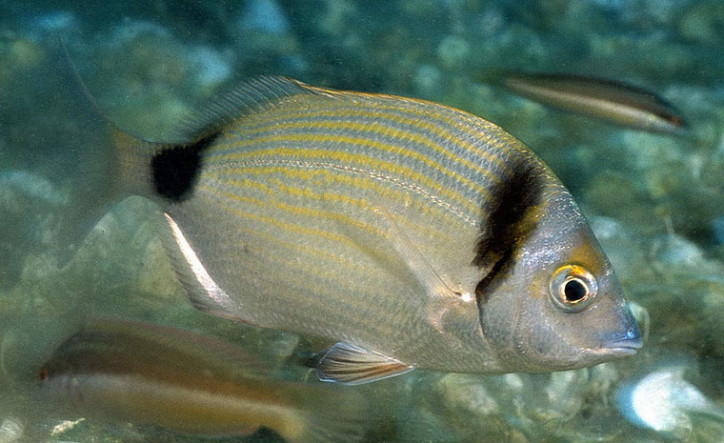Fish of the Diplodus genus of the Sparidae (sea breams and porgies) family of the superfamily Percoidea of the Percoidei suborder of the Perciformes order of the Acanthopterygii superorder.

(Common two-banded seabream. Photo © ronjenjehrvatska.com)
Common two–banded seabream (Diplodus vulgaris) was first described in 1817 by the French zoologist Étienne Geoffroy Saint-Hilaire (1772-1844).
It inhabits the depths up to 160 meters, usually – up to 30 meters. It prefers to swim close to the rocky and sandy bottom, less often – among thickets of grass. The maximum recorded length is 45 cm, specimens up to 22 cm long are more common. The maximum weight is 1.3 kilograms. It feeds on crustaceans, worms and mollusks.

(Common two-banded seabream. Photo by © Anders Finn Jørgensen. commons.wikimedia.org)
It is a permanent inhabitant of the Adriatic Sea.
Names of common two–banded seabream (Diplodus vulgaris) in other languages as follows:
Sargu me dy shirita të zi (Albanian), Обикновена морска каракуда (Obiktovena morska karakuda) (Bulgarian), Zwartkopzeebrasem (Dutch), Καμπανάς (Kambanas) (Greek), Sargus matzui (Hebrew), Sargo mojarra (Spanish), Sarago fasciato (Italian), Zweibindenbrasse (German), Amarel (Polish), Safia (Portuguese), Клюворыл (Kljuvoryl) (Russian), Fratar (Serbian, Croatian), Fratrc (Slovenian), Sar à tête noire (French).